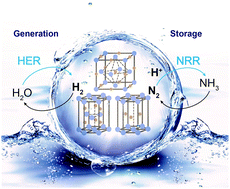Interface engineering in transition metal carbides for electrocatalytic hydrogen generation and nitrogen fixation
Abstract
With an increasing energy consumption rate and rising global population, constructing sustainable energy technologies has become one of the major scientific challenges. Therefore, the development of electrocatalytic conversion technologies that can convert renewable resources, such as water and nitrogen, into value-added chemicals or fuels (e.g., hydrogen and ammonia) can be crucial. A number of transition metal carbides (TMCs) have been investigated over the past few years as effective electrocatalysts for various reactions. This is mainly owing to their unique electronic structures, which leads to high electrical conductivity and chemical stability. Moreover, the reactivity of TMC-based electrocatalysts is highly dependent on their surface and interfacial properties. This review focuses on tuning nanostructures and interfaces to enhance the electrocatalytic activity of TMC-based materials for hydrogen production and nitrogen fixation. The mechanisms behind the surface and interface engineering are discussed, including the synergy effects, facet binding energy, active defects, and low-coordinated sites. In particular, studies on activity enhancement through design of the interfacial phase, composition, and structure in TMC-based electrocatalysts are highlighted. The effective tuning strategies might pave the way for future development of highly active TMC-based electrocatalysts for sustainable energy-related conversion.



 Please wait while we load your content...
Please wait while we load your content...